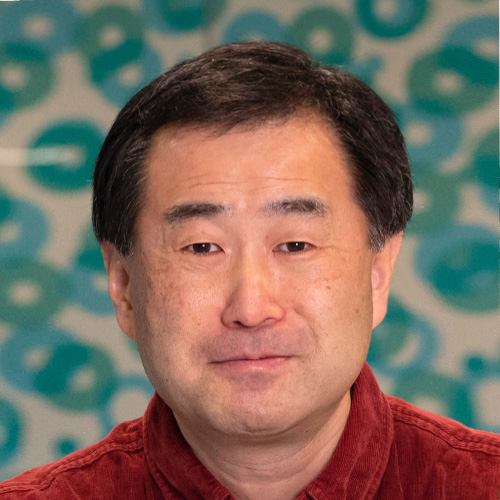Related Outline
Self-organisation is a defining feature of living systems and entails complex interplay between molecular, cellular and mechanical signals across various spatio-temporal scales. Using early mammalian embryos as a model, the Hiiragi group adopts a variety of methods including genetics, microscopy, biophysics, engineering and modelling, to investigate how self-organised forms and patterns emerge from a spherical mass of cells.
Career
- Professor at Graduate School of Medicine, Kyoto University, Japan, since 2023
- Senior group leader at the Hubrecht Institute, the Netherlands, since 2021
- Distinguished Visiting Professor at ASHBi, Kyoto University, Japan, since 2019
- Charles Darwin Professor of Animal Embryology (2018-2019), University of Cambridge, UK
- Group leader (2011-2021) at EMBL, Heidelberg, Germany
- Independent group leader (2007-2011) at the Max Planck Institute for Molecular Biomedicine, Münster, Germany
- Group leader (2002-2007) at the Max Planck Institute of Immunobiology, Freiburg, Germany
- Postdoc (2000-2002) in the group of Davor Solter at the Max Planck Institute of Immunobiology, Freiburg, Germany
- PhD (1995-2000) in the group of Shoichiro Tsukita at Kyoto University, Japan
- MD (1993) at Kyoto University, Japan
Representative Achievements
- Coupling of cell shape, matrix and tissue dynamics ensures embryonic patterning robustness.
Moghe, P., Belousov, R., Ichikawa, T., Iwatani, C., Tsukiyama, T., Erzberger, A., & Hiiragi, T.
Nature cell biology (2025) 27(3), 408–423
doi: https://doi.org/10.1038/s41556-025-01618-9 - Temporal variability and cell mechanics control robustness in mammalian embryogenesis
Fabrèges, D., Corominas-Murtra, B., Moghe, P., Kickuth, A., Ichikawa, T., Iwatani, C., Tsukiyama, T., Daniel, N., Gering, J., Stokkermans, A., Wolny, A., Kreshuk, A., Duranthon, V., Uhlman, V., Hannezo, E., & Hiiragi, T.
Science, 2024, 386(6718), eadh1145
doi: https://www.science.org/doi/10.1126/science.adh1145 - An ex vivo system to study cellular dynamics underlying mouse peri-implantation development.
Ichikawa, T., Zhang, H. T., Panavaite, L., Erzberger, A., Fabrèges, D., Snajder, R., Wolny, A., Korotkevich, E., Tsuchida-Straeten, N., Hufnagel, L., Kreshuk, A., & Hiiragi, T.
Developmental Cell (2022) 57(3), 373–386.e9.
DOI: https://doi.org/10.1016/j.devcel.2021.12.023 - Lumen expansion facilitates epiblast-primitive endoderm fate specification during mouse blastocyst formation.
Ryan, A.Q., Chan, C.J., Graner, F. and Hiiragi, T.
Developmental Cell (2019) 51, 684-697.e4.
DOI: https://doi.org/10.1016/j.devcel.2019.10.011 - A tug-of-war between cell shape and polarity controls division orientation to ensure robust patterning in the mouse blastocyst.
Niwayama, R., Moghe, P., Liu, Y.-J., Fabréges, D., Buchholz, F., Piel, M. and Hiiragi, T.
Developmental Cell (2019) 51, 564-574.e6.
DOI: https://doi.org/10.1016/j.devcel.2019.10.012 - Hydraulic control of mammalian embryo size and cell fate.
Chan, C. J., Costanzo, M., Ruiz-Herrero, T., Mönke, G., Petrie, R. J., Bergert, M., Diz-Muñoz, A., Mahadevan, L., & Hiiragi, T.
Nature (2019) 571(7763), 112–116.
DOI: https://doi.org/10.1038/s41586-019-1309-x - The Apical Domain Is Required and Sufficient for the First Lineage Segregation in the Mouse Embryo.
Korotkevich, E., Niwayama, R., Courtois, A., Friese, S., Berger, N., Buchholz, F. and Hiiragi, T.
Developmental Cell (2017) 40(3), 235–247.e7.
DOI: https://doi.org/10.1016/j.devcel.2017.01.006 - Asymmetric division of contractile domains couples cell positioning and fate specification.
Maître, J.-L., Turlier, H., Illukkumbura, R., Eismann, B., Niwayama, R., Nedelec, F. and Hiiragi, T.
Nature (2016) 536(7616), 344–348.
DOI: https://doi.org/10.1038/nature18958 - Pulsatile cell-autonomous contractility drives compaction in the mouse embryo.
Maître, J.-L., Niwayama, R., Turlier, H., Nédélec, F. and Hiiragi, T.
Nature Cell Biology (2015) 17(7), 849–855.
DOI: https://doi.org/10.1038/ncb3185 - Cell-to-cell expression variability followed by signal reinforcement progressively segregates early mouse lineages.
Ohnishi, Y., Huber, W., Tsumura, A., Kang, M., Xenopoulos, P., Kurimoto, K., Oleś, A. K., Araúzo-Bravo, M. J., Saitou, M., Hadjantonakis, A. K., & Hiiragi, T.
Nature Cell Biology (2014) 16, 27–37.
DOI: https://doi.org/10.1038/ncb2881 - Stochastic patterning in the mouse pre-implantation embryo.
Dietrich, J.-E. and Hiiragi, T.
Development (2007) 134(23), 4219-4231.
DOI: https://doi.org/10.1242/dev.003798 - First cleavage plane of the mouse egg is not predetermined but defined by the topology of the two apposing pronuclei.
Hiiragi, T. and Solter, D.
Nature (2004) 430(6997), 360-364.
DOI: https://doi.org/10.1038/nature02595

